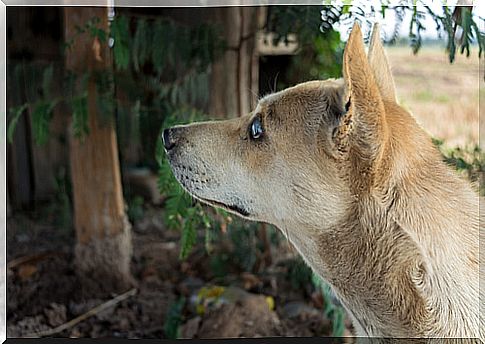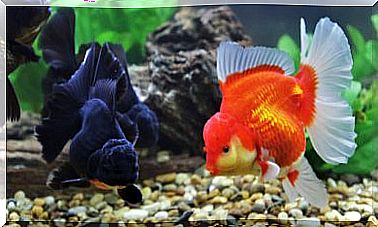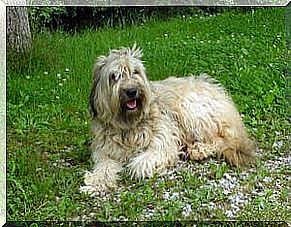Treatment Of Blindness In Dogs

Smell is surely the most useful and best developed sense in dogs. They use their nose to look for traces, identify their congeners, find food… However, this aspect does not diminish the importance of the function of the sense of sight in these animals and makes blindness in dogs a pathology to avoid.
For this reason, although it does not represent the same consideration as in us humans, it does not stop assuming an equally relevant meaning in the normal development of the dog’s daily life.
There are many possible pathologies that can trigger and lead to loss of vision in these animals. For this reason, treatment will always be aimed at treating the primary cause. We are going to explain and delve into some of the most common and their corresponding treatments.
How to detect blindness in dogs
In the first place, a little appreciation is necessary about the aspects to be borne in mind by dog guardians to detect possible blindness in their pets.
Normally, in the absence of associated acute pathologies, these processes tend to have a degenerative and progressive character. For this reason, it can sometimes be difficult to perceive a loss of vision early. We show you some possible clues to consider:
- The animal may begin to behave restless and skittish. He may be more shy or aggressive, depending on the character of the dog. This happens because losing vision makes you feel more vulnerable.
- You can crash into an object, especially at night during walks. With less light intensity and in an unknown environment, the lack of visual acuity is manifested.
At home, in a familiar environment, the animal has learned the “circuit” by heart and does not tend to have an accident. In this regard, a test to detect vision loss early consists of developing a kind of domestic obstacle course for our animal and observing how it develops.

Possible treatments
To make this space more dynamic, we are going to relate the treatment to the associated pathology. We will mention the most frequent problems that cause most cases of blindness in dogs.
waterfalls
Without a doubt, it is the pathology behind most vision loss problems in dogs. The presentation of this disease is progressive. Except for diabetic cataract, which usually has a more acute presentation.
Although there are several topical treatments based on eye drops to slow down the rate at which cataracts progress, the definitive solution is surgical. This surgery must be carried out by a veterinary ophthalmologist, after assessing the state of the animal’s eye.
Glaucoma
It is an alteration of the eyeball that consists of an increase in intraocular pressure, with consequent damage to the optic nerve. There are many causes that can produce this increase in pressure, so treatment will focus on treating the underlying reason.
There are various medical treatments aimed at reducing intraocular pressure. Glaucoma is usually easily resolved with the administration of eye drops or oral drugs. It should be mentioned that in certain cases surgical treatment is necessary.
Loss of opacity of the cornea
As many of you know, the cornea is the transparent structure that allows light to enter the eye. Any problem that causes an alteration in this transparency will inevitably lead to blindness.
Ulcers, conjunctivitis or dry eye are some of the diseases that cause this corneal opacity.
Treatment will always be aimed at maintaining transparency. With the use of topical corticosteroids in eye drops, we can reduce the creation of new blood vessels, which confer opacity to the cornea.
On the other hand, hydration of the eye is of vital importance in these cases since we minimize the development of lesions.

Tumors
There are several tumor processes that can affect the eyeball, both primary and secondary. These processes must always be correctly valued to know their nature.
Although they may be benign, if blindness occurs as a result of tumor development, surgical removal is the treatment of choice, especially in cases of poor prognosis tumors.
However, particularly in the case of primary tumors, these are usually unilateral and affect only one of the eyes.
Early detection is the best solution
As we have seen, blindness in dogs is a rare pathology that requires some attention from the guardian to be detected.
The causes are multiple, but the main solution is a quick detection of the problem through professional help. Your trusted veterinarian will guide you on what to do and wait for this pathology in your pet.









